
The steel maker plans to slash capex to ₹8000 crore from ₹12000 crore planned earlier for FY20.
Between Europe and India the aim is to keep Europe operations cash positive and in India there may be phasing out or delaying some projects, Narendran said while relaunching its steel retail store “steeljunction” in a different avatar in a new location.
Now approximately ₹8000 crore of capex would likely be planned for India and around ₹4000 crore for Europe, Narendran said adding the exact figure is still being worked out.
Major part of the capex for India will be spent for expansion of Kalinganagar project by prioritizing some projects like cold rolling mill and pellet plant project and delaying some projects.
However, the Tata Steel management is confident of completing expansion of the Kalinganagar project by FY22.
Closes non-core European facilities
Tata Steel has recently signed a sales and purchase agreement for Cogent Power Inc (CPI), with Japanese steel giant JFE Shoji Trade Corporation.
CPI manufactures cores for electrical distribution transformers and employs nearly 300 people.
Furthermore Tata Steel has decided to retain Surahammars Bruks AB, which makes advanced steels for electric vehicles and employs around 100 people.
However, despite exploring all options, Tata Steel has been unable to find a way forward for Orb Electrical Steels and so proposes to close the site, with the potential loss of up to 380 jobs.
“We have been able to secure the future for almost 400 colleagues in CPI and Surahammars Bruks. However, today’s proposal will be sad news for colleagues at Orb in South Wales. This is necessary, enabling us to focus our resources, including investment, on our core business and markets, helping us build a long-term sustainable future in Europe,” Henrik Adam, CEO of Tata Steel’s European operations, said.
هذه القصة مأخوذة من طبعة September 2019 من Steel Insights.
ابدأ النسخة التجريبية المجانية من Magzter GOLD لمدة 7 أيام للوصول إلى آلاف القصص المتميزة المنسقة وأكثر من 9,000 مجلة وصحيفة.
بالفعل مشترك ? تسجيل الدخول
هذه القصة مأخوذة من طبعة September 2019 من Steel Insights.
ابدأ النسخة التجريبية المجانية من Magzter GOLD لمدة 7 أيام للوصول إلى آلاف القصص المتميزة المنسقة وأكثر من 9,000 مجلة وصحيفة.
بالفعل مشترك? تسجيل الدخول

Steel's Net Zero mission
The country’s commitment to achieving Net Zero within a targeted timeframe will now propel its steel sector towards a sustainable future in line with global trends.
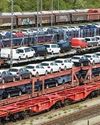
Fuel Price Hike, Supply Chain Disruption Hurt Festive Sales
Supply chain disruptions and fuel price hikes have hurt festive sales in a big way as most auto majors posted decline in sales in October.

Seaborne coking coal offers remain range-bound
Seaborne coking coal offers moved in a narrow range in October amid global supply tightness and healthy spot demand.
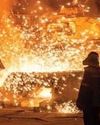
Global crude steel output down 8% in September
China manufactured 74 mt in September, fall of 21% y-o-y while India’s production went up by 7% to 10 mt.
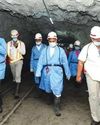
MOIL embarks on expansion projects
“Even though our country is blessed with manganese ore reserves, we import 50% of the domestic requirement. We have to lower our import dependence and save precious foreign exchange.” Ram Chandra Prasad Singh, Steel Minister

Iron ore handled by major ports down 17% in H1
The 12 major Indian ports handled 27 mt of iron-ore during H1 of 2021, down by 17% from 33 mt recorded for the corresponding period of previous year.
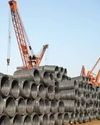
Shrinking China output to boost India exports
“In the third quarter of 2021, the company actively responded to the pressure from external policies, such as production curtailment and dual control system on energy consumption and intensity, as well as coal resource shortage and surging prices.” Baoshan Iron and Steel Co Ltd
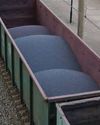
Indian Railways' iron-ore handling up 25% in H1
Indian Railways in April-September of 2021 (H1) transported 84 mt of iron ore, up by 25% over 67 mt during April-September 2020.
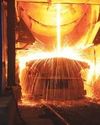
September crude steel production up 7.2% y-o-y
India’s crude steel production in September 2021 grew 7.2 percent to 9.547 million tons (mt) over September 2020 but was down by 3.2 percent from August 2021 output, provisional steel ministry data showed.

“Five enablers: way forward to sustainable cleaner steel”
Right and scalable technology, appropriate policy guidance by government, access to finance to fund transition, willingness of customers to pay for cleaner products and infrastructure for use of new technologies are the need of the hour for the sustainable and cleaner steel industry, according to Madhulika Sharma, Chief Corporate Sustainability, Tata Steel.